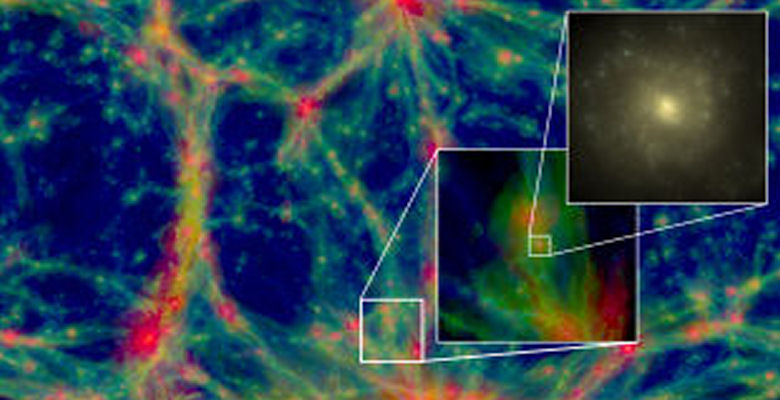ARI creates simulation of the Universe with realistic galaxies
An international team of astronomers, including Dr Rob Crain from the LJMU Astrophysics Research Institute (ARI), have developed a simulation of the Universe in which realistic galaxies are created. Astronomers can now use the results to study the development of galaxies from almost 14 billion years ago until now.

For years, astronomers have studied the formation of galaxies using computer simulations, but with limited success. The galaxies that formed in previous simulations were often too massive, too small, too old and too spherical.
The galaxies formed in the new EAGLE-simulation (Evolution and Assembly of GaLaxies and their Environments) are a much closer reflection of real galaxies thanks to the strong galactic winds, which blow away the gas supply needed for the formation of stars.
EAGLE's galaxies are lighter and younger because fewer stars form and they form later. In the EAGLE simulation these galactic winds - which are powered by stars, supernova explosions and supermassive black holes - are stronger than in earlier simulations.
The sizes and shapes of the thousands of galaxies that form in the EAGLE simulation are also similar to those of galaxies that astronomers observe in the Universe.
The simulations took several months to run at the "Cosmology Machine" in Durham and at "Curie" in Paris, among the largest computers used for scientific research in the U.K. and France, respectively.
Dr Crain, who was a co-author on the paper published in the Monthly Notices of the Royal Astronomical Society and is a Royal Society Research Fellow, said:
"This is the start of a new era for us. We can now manipulate the conditions of the Universe and study the evolution of galaxies throughout the past 14 billion years."
The study was in collaboration with the Universities of Leiden in the Netherlands and Durham in the UK and led by professor Joop Schaye (Leiden University).
Co-author Richard Bower from Durham University added:
"The universe generated by the computer is just like the real thing. There are galaxies everywhere, with all the shapes, sizes and colours I've seen with the world's largest telescopes. It is incredible. In the EAGLE universe I can even press a button to make time run backwards.”
Having developed a simulation which produces galaxies with characteristics similar to observed galaxies, astronomers can now study the evolution of individual galaxies in detail.
EAGLE is a project of the VIRGO Consortium. The goal of this consortium is to carry out state-of-the-art cosmological simulations. The EAGLE project was made possible by the VIRGO Consortium, Leiden University, Durham University, the European Research Council, the Netherlands Organization for Scientific Research, the Science & Technology Facilities Council, PRACE and DiRAC.
Article: The EAGLE project: simulating the evolution and assembly of galaxies and their environments, Schaye et al. 2015, Monthly Notices of the Royal Astronomical Society, Vol. 446, 521-554. DOI: 10.1093/mnras/stu2058


